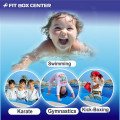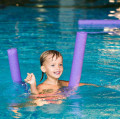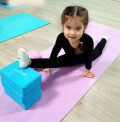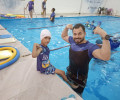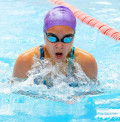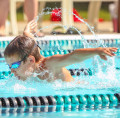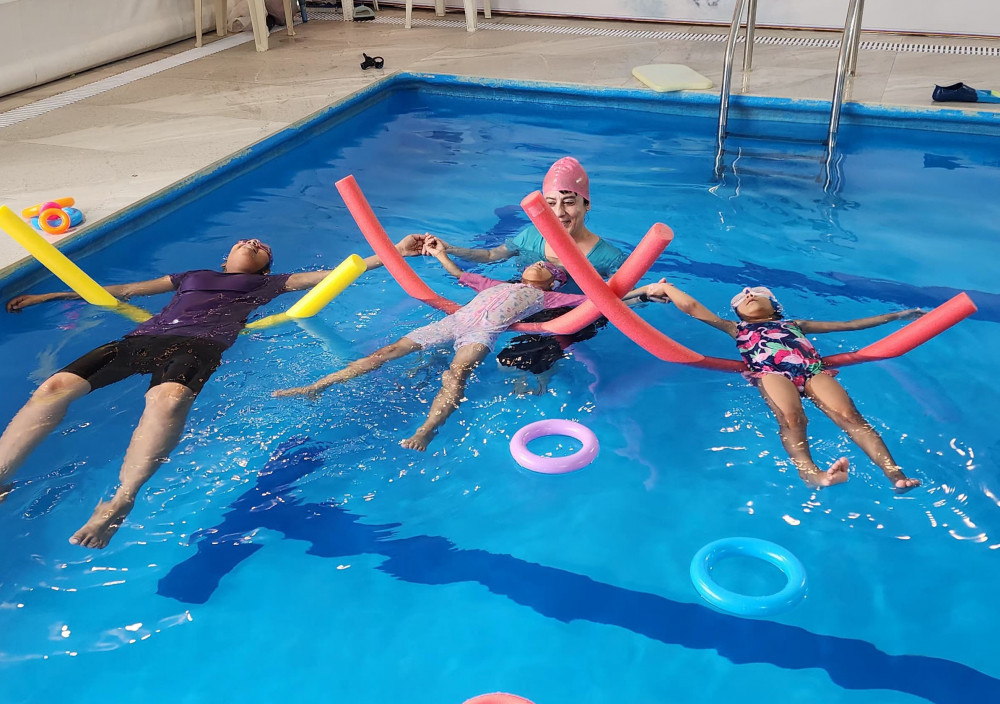
Learning backstroke opens up a world of possibilities in the water
2024-05-13 - swimmingSwimming is not only a valuable life skill but also a fun
activity for kids to engage in. Among the various swimming strokes, the
backstroke offers unique benefits and excitement. In this article, we'll delve
into the basic steps of backstroke swimming specifically tailored for kids,
ensuring a safe and enjoyable learning experience.
Understanding the Backstroke
Backstroke is a swimming stroke performed on the back,
characterized by alternating arm movements and a flutter kick. It's an
essential skill for swimmers of all ages, offering full-body workout and
improving overall aquatic competence.
Importance of Learning Backstroke
Learning backstroke opens up a world of possibilities in the
water. It enhances water safety by providing kids with the ability to float and
move efficiently on their backs, allowing them to rest and regain energy during
longer swims.
Safety Precautions
Importance of Supervision
Before embarking on backstroke lessons, it's crucial to
emphasize the importance of adult supervision. Children should never swim
alone, and a lifeguard or responsible adult should always be present to ensure
safety.
Ensuring a Safe Environment
Choose swimming pools with shallow ends and clear lanes for
practice. Remove any obstacles or hazards from the pool area to minimize the
risk of accidents. Additionally, ensure that kids wear appropriate swim gear,
including goggles and flotation devices if necessary.
Floating on the Back
Begin by teaching kids how to float on their backs
comfortably. Encourage them to relax and spread their arms out to the sides
while gently kicking their legs to maintain buoyancy. Assure them that floating
on the back is a natural and safe position.
Arm Movement Technique
Next, introduce the arm movement technique by demonstrating
the alternating motion of the arms. Kids should extend one arm above their head
while pulling the other arm down towards their hip, maintaining a continuous
and rhythmic motion.
Leg Movement Technique
Teach kids the flutter kick, where they kick their legs in
an up-and-down motion while keeping their knees slightly bent. Emphasize the
importance of kicking from the hips to generate propulsion and maintain balance
in the water.
Coordinating Arms and Legs
Once kids are comfortable with the arm and leg movements
individually, encourage them to coordinate both actions simultaneously. Remind
them to keep their body position flat and streamlined, with their head resting
comfortably on the water's surface.
Patience and Persistence
Learning backstroke takes time and patience. Encourage kids
to persevere through initial challenges and setbacks, reassuring them that
improvement will come with consistent practice.
Consistent Practice
Schedule regular swimming sessions to reinforce backstroke
skills and build confidence in the water. Practice drills and exercises that
focus on specific aspects of the stroke, gradually increasing the level of
difficulty as kids progress.
Feedback and Guidance
Provide constructive feedback and encouragement to kids
throughout their learning journey. Offer praise for their efforts and
achievements, while also gently correcting any mistakes or errors in technique.
Head Position
One common mistake in backstroke swimming is lifting the head
too high, which can cause strain on the neck and disrupt body alignment.
Encourage kids to keep their head in a neutral position, looking straight up at
the ceiling or sky.
Overarching
Avoid excessive arching of the back, as it can create drag
and slow down forward progress. Encourage kids to maintain a slight core
engagement and elongate their body from head to toe for optimal efficiency.
Ineffective Arm Movement
Ensure that kids fully extend their arms during the recovery
phase of the stroke, reaching as far back as possible before initiating the
next arm pull. This maximizes propulsion and minimizes resistance in the water.
Building Confidence
Celebrate milestones and achievements along the way to boost
kids' confidence and motivation. Set realistic goals for improvement and track
progress over time to demonstrate tangible results.
Increasing Distance and Speed
As kids become more proficient in backstroke swimming,
gradually increase the distance and speed of their swims. Introduce interval
training and endurance drills to improve stamina and performance in the water.
Conclusion
Learning backstroke swimming is an exciting journey for kids,
offering a blend of fun, fitness, and safety. By following the basic steps
outlined in this article and practicing consistently, kids can master the
backstroke stroke and enjoy the countless benefits it brings.


